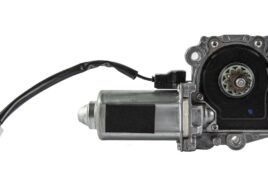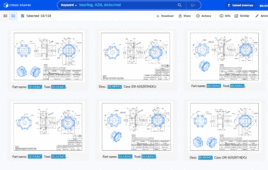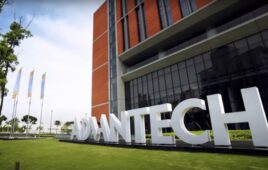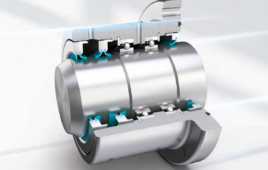Leland Teschler Executive Editor
[email protected]
On Twitter @DW_LeeTeschler
Teschler on Topic
The governor of Michigan recently signed legislation allowing autonomous vehicles to operate on the state’s highways. The signing was at a ceremony wherein the legislator was flanked by a self-driving Ford Fusion and a Model T.
For those who follow the auto industry, there was an irony in the presence of that car manufactured over 100 years ago: Time Magazine once put the Model T on its list of the “50 worst cars of all time.” Time’s reasoning was that the Model T deserved this sad distinction because it was the first car produced on an assembly line and thus unleashed the “consequences of putting every living soul on gas-powered wheels.”
You might guess from this verbiage that Time viewed those “consequences” as being  overwhelmingly negative. It is surprising that we’ve come to a point where journalists view as unfavorable the outcomes stemming from mass production, and particularly the mass production of vehicles. So perhaps it’s time to review why mass-produced vehicles have vastly benefited humankind.
overwhelmingly negative. It is surprising that we’ve come to a point where journalists view as unfavorable the outcomes stemming from mass production, and particularly the mass production of vehicles. So perhaps it’s time to review why mass-produced vehicles have vastly benefited humankind.
To get a good summary, we can turn to the public policy analyst Randal O’Toole. He points out that the rise in the speed of urban travel made possible by mass-produced autos has dramatically boosted productivity and thereby improved the living standards of working people. Specifically, autos eliminated the need for workers to live near their jobs. Consequently, by making suburbs practical, there has been a 50% rise in the rate of homeownership since 1940 that stems partly from the availability of auto travel.
Blue-blood critics generally view the suburbs in which most of those homes reside as urban sprawl. But O’Toole points out that mass-produced vehicles have made it possible to preserve far more productive farm land than urban areas have consumed. His reasoning is that before trucks and tractors replaced teams of horses, about a third of all farm land had to be devoted to pasture. Since 1913, he says, close to 200 million acres of American pasture has been converted to productive crops or forests. In contrast, suburbs occupy well under 100 million acres.
Getting back to the autonomous vehicles soon to be tooling around Michigan roads, I would add another benefit to O’Toole’s list. Mass-produced Uber-style robotic cars could finally bring an end to plans for ill-conceived light rail lines. This would be a good thing. Statistics show that most light rail lines are less energy efficient than private cars. One analysis done by Brad Templeton, internet pioneer and Chair Emeritus of the Electronic Frontier Foundation, reveals the problem. He employed figures from the U.S. Dept. of Energy to compare the energy efficiency of various modes of transportation in terms of BTUs per passenger-mile.
The average light-rail line, Templeton found, expends about 7,600 btu/passenger-mile while the average private car carrying one person expends only 5,500 btu/passenger-mile. The reason for light rail’s poor showing is that a lot of light rail lines run almost empty much of the time. Many light rail lines go in because of political agendas and wishful thinking rather than because of compelling ridership projections.
Fleets of Uber-style robotic cars could make much more sense than rail lines in terms of energy and resource use. The energy efficiency of such vehicles could look a lot like that of a Tesla, which consumes a little under 2,000 btu/passenger-mile.
But you don’t arrive at a mass-produced robotic version of a Tesla unless you start with the mass-produced Model T. That reality seems to be lost on journalists at Time.
Filed Under: Commentaries • insights • Technical thinking, Automotive





Tell Us What You Think!